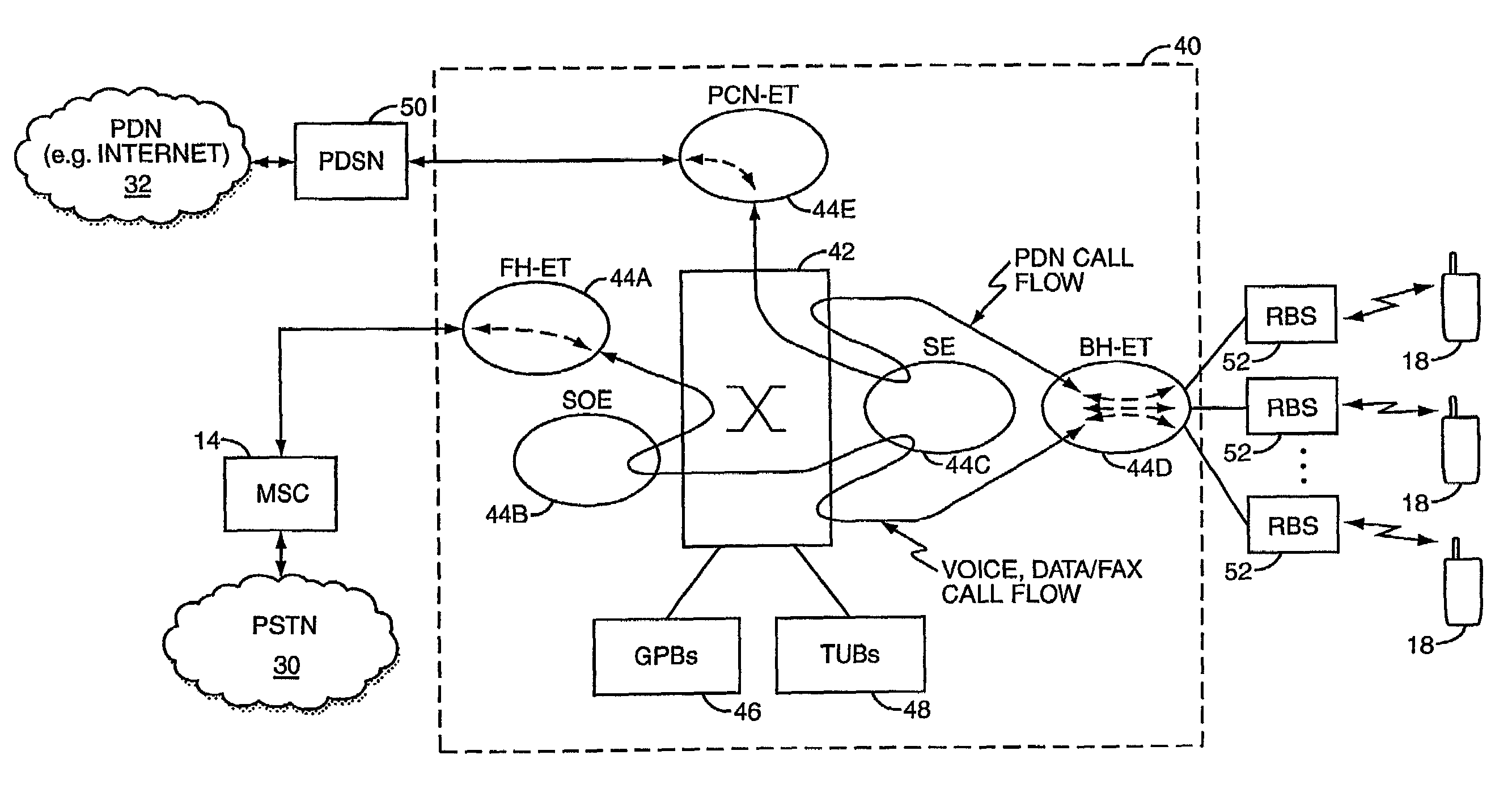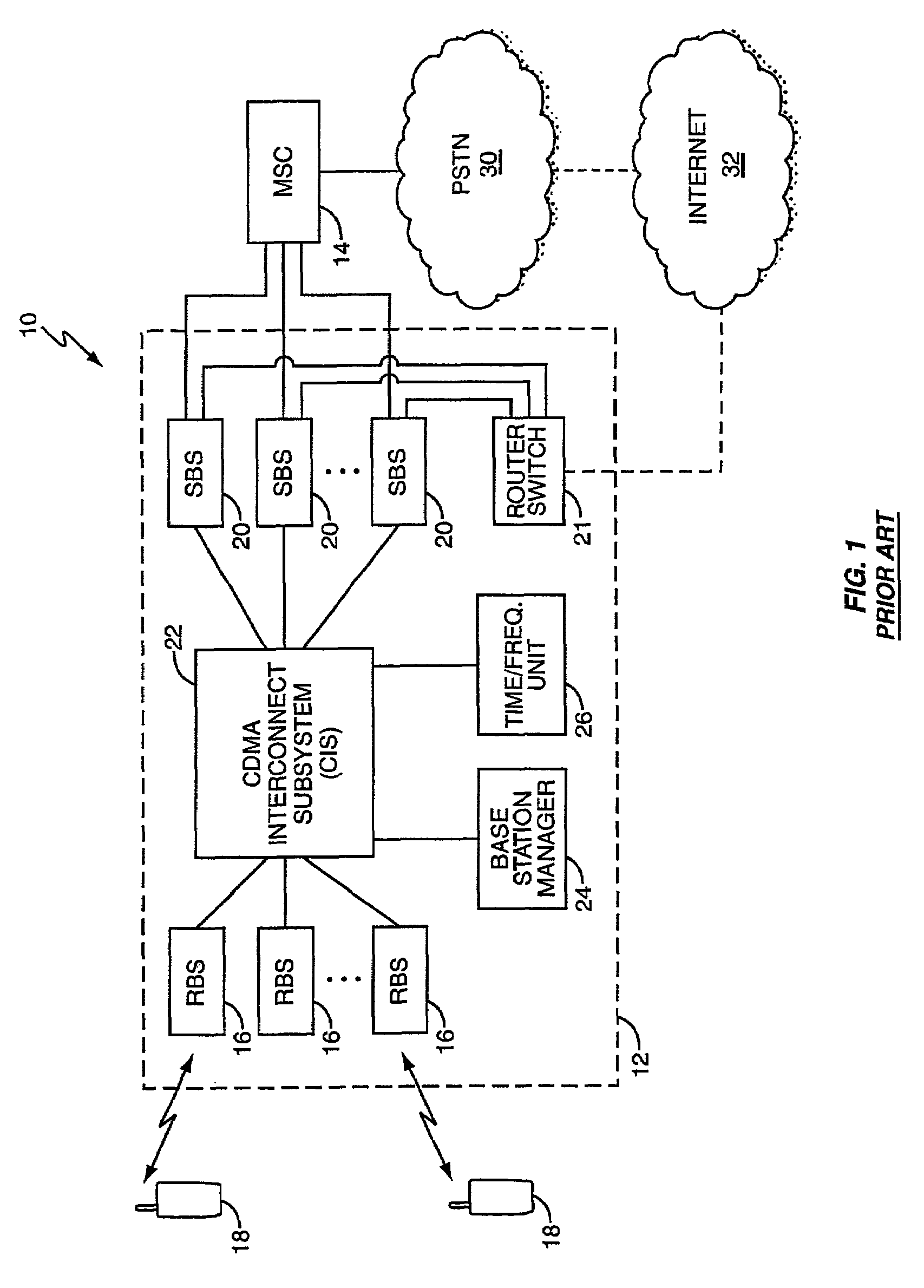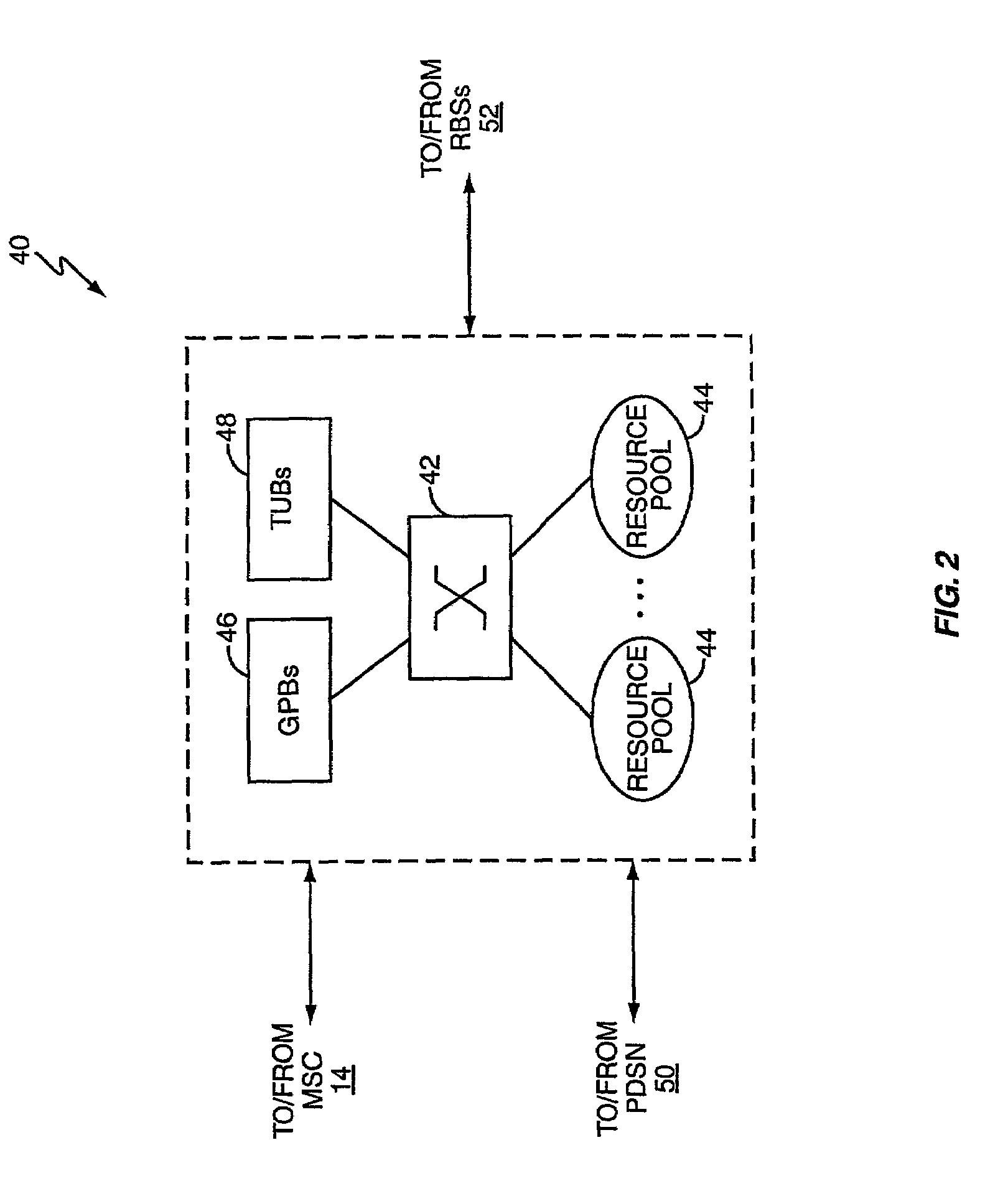Robust radio base station controller architecture
a radio base station and controller technology, applied in the field of wireless communication systems, can solve the problems of significant number of dropped calls, impractical evolution of the architecture, and exposed a number of limitations of the bcn architecture, and achieve the effects of improving performance, high call density and scalability, and high data rate capacity of the switching fabri
- Summary
- Abstract
- Description
- Claims
- Application Information
AI Technical Summary
Benefits of technology
Problems solved by technology
Method used
Image
Examples
Embodiment Construction
[0014]The present invention is described in terms of an advanced base station control system (BSC) for use in a third generation (3G) Code Division Multiple Access (CDMA) wireless communication network. Some of the nomenclature used in describing the various call processing resources is specific to the assignee of the instant application, but the resource functionality will be readily apparent to those skilled in the art. Moreover, it should be understood that the BSC architecture described below may, due to its novel interconnection and flexible call processing flow, be implemented in a number of different ways.
[0015]Turning now to the drawings, FIG. 1 is a diagram of a wireless communication network 10 comprising a typical CDMA BSC 12, one or more mobile switching centers 14, one or more radio base stations (RBSs) 16, and a plurality of wireless access terminals 18, also referred to as user terminals (UT) 18. The BSC 12 comprises a plurality of selector bank subsystems (SBSs) 20 p...
PUM
 Login to View More
Login to View More Abstract
Description
Claims
Application Information
 Login to View More
Login to View More - R&D
- Intellectual Property
- Life Sciences
- Materials
- Tech Scout
- Unparalleled Data Quality
- Higher Quality Content
- 60% Fewer Hallucinations
Browse by: Latest US Patents, China's latest patents, Technical Efficacy Thesaurus, Application Domain, Technology Topic, Popular Technical Reports.
© 2025 PatSnap. All rights reserved.Legal|Privacy policy|Modern Slavery Act Transparency Statement|Sitemap|About US| Contact US: help@patsnap.com



